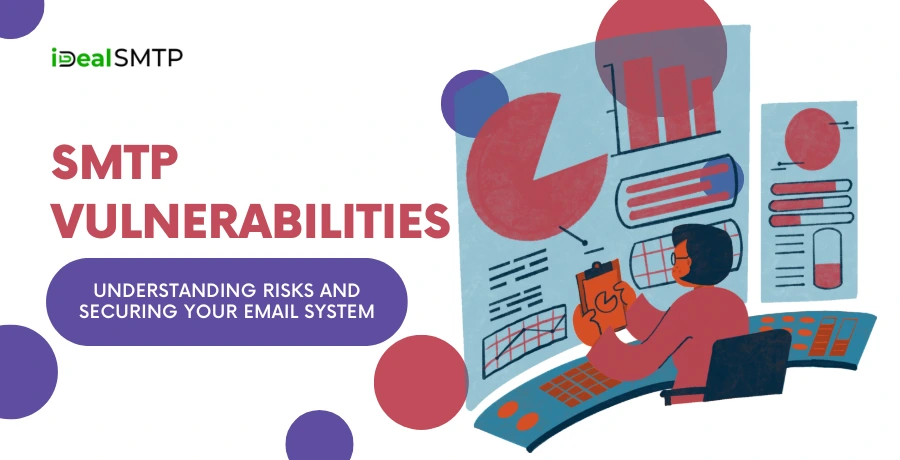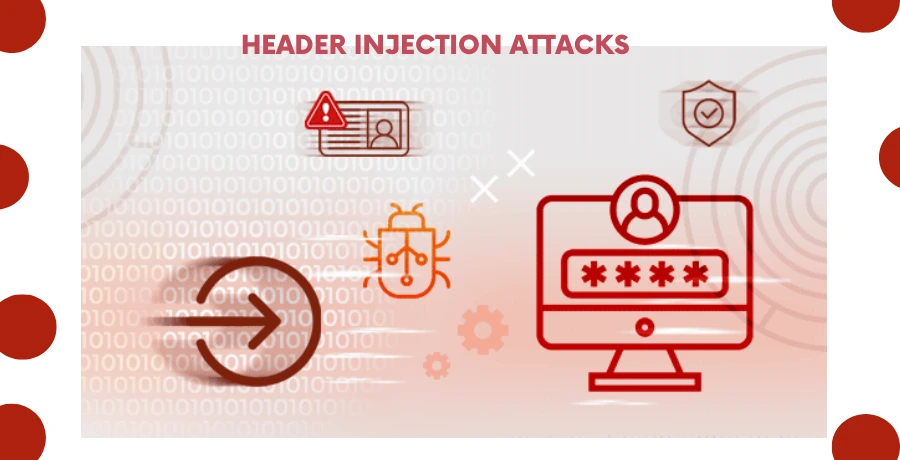Email is one of the most widely used forms of communication, both personally and professionally. While it may seem simple on the surface, a lot goes on behind the scenes to ensure your messages get delivered. One of the core protocols involved is SMTP (Simple Mail Transfer Protocol).

However, like any system, SMTP is not immune to threats. This blog explores SMTP vulnerabilities in detail, with a focus on SMTP vulnerabilities, post SMTP vulnerability, and SMTP open relay vulnerability.
Table of Contents
Pricing
| Trail Plan | Standard Plan | Premium Plan | Professional Plan |
| $50 | $145 | $185 | $225 |
| Sending Limit | Sending Limit | Sending Limit | Sending Limit |
| 1000 Emails/Hour | 1500 Emails/Hour | 3000 Emails/Hour | 5000 Emails/Hour |
What is SMTP?
SMTP, or Simple Mail Transfer Protocol, is the protocol responsible for sending emails from one server to another. When you hit “send” on your email, SMTP is the system that makes sure your message reaches the recipient’s mail server. SMTP is like a postal worker who collects your letter and ensures it gets dropped off at the recipient’s local post office.
However, SMTP was developed in the early 1980s, long before today’s cybersecurity challenges became prominent. At that time, the focus was more on functionality than security. As a result, SMTP lacks many built-in security features, making it vulnerable to attacks.
Why SMTP Vulnerabilities Matter
SMTP vulnerabilities are important to address because they open the door for cybercriminals to exploit your email infrastructure. This can lead to:
- Sending Spam– Hackers can use your server to send spam emails, leading to blacklisting of your domain.
- Data Theft– Emails can be intercepted during transmission, exposing confidential data.
- Service Disruption– Attackers may overload your server with requests, causing it to crash.
- Impersonation– Emails can be spoofed to appear as if they’re from a trusted source, leading to phishing scams.
When SMTP vulnerabilities are left unpatched, your business could face serious consequences like customer trust loss, legal action, and damage to brand reputation.
Common SMTP Vulnerabilities
Let’s now break down the most common SMTP vulnerabilities in detail.
1. SMTP Open Relay Vulnerability
An open relay allows any user on the internet to send emails through your SMTP server without authentication. Imagine if anyone could use your post office to send mail with your company’s return address; it would cause chaos.
How It Happens:
This issue often arises when mail servers are misconfigured to relay mail from any external user to any external recipient. This may happen with outdated systems or due to oversight during server setup.
Dangers:
- Massive volumes of spam can be sent using your server.
- Your domain or IP address could be blacklisted.
- Legal action might be taken if your server is used for malicious content.
Solution:
- Require SMTP authentication before allowing any user to send emails.
- Use IP whitelisting to limit who can access your mail server.
- Continuously monitor outgoing email traffic for suspicious activity.
2. Lack of Encryption
SMTP transmits emails in plain text unless encryption protocols are enabled. This means that during transmission, anyone intercepting the network traffic could read the email content.
Risks:
- Sensitive information like passwords or personal data can be stolen.
- Emails may be altered without detection.
- Corporate secrets and financial data can be compromised.
Solution:
- Use STARTTLS to upgrade plaintext connections to encrypted ones.
- Prefer SMTPS (SMTP over SSL) for stronger encryption.
- Always use the latest version of TLS (Transport Layer Security) and configure it properly.
3. Weak Authentication Mechanisms
Authentication ensures that only authorized users can access your SMTP server. Weak authentication, like plain-text passwords, can be easily intercepted.
Risks:
- Cybercriminals can hijack accounts to send spam or malware.
- Accounts may be used for phishing campaigns.
Solution:
- Enforce strong password policies.
- Use modern authentication protocols such as OAuth2.
- Always combine authentication with encryption to protect credentials.
4. Post SMTP Vulnerability
Once an email is accepted by an SMTP server, it still needs to be processed, routed, and delivered to the recipient. Vulnerabilities can occur at this stage, these are called post SMTP vulnerabilities.
How It Happens:
- Emails are stored unencrypted on servers.
- Internal message routing isn’t properly protected.
- Staff with access to internal systems might tamper with messages.
Risks:
- Data exposure from unprotected storage.
- Message alteration or deletion.
- Leakage of sensitive content to unauthorized users.
Solution:
- Encrypt stored emails and use file system permissions.
- Control and log access to internal message systems.
- Regularly audit the entire email delivery workflow.
5. Header Injection Attacks
SMTP headers contain metadata about an email, like sender, recipient, and subject. If input is not sanitized, attackers can manipulate headers to alter email flow.

Risks:
- Send spam emails by manipulating the “To” or “CC” fields.
- Execute cross-site scripting (XSS) or phishing attacks.
- Crash servers by injecting malformed headers.
Solution:
- Validate and sanitize all user inputs in email forms.
- Use frameworks that automatically prevent header injection.
6. Denial of Service (DoS) Attacks
SMTP servers can be overwhelmed by a flood of requests, leading to a denial of service.
Methods:
- Massive email submissions from botnets.
- Abuse of SMTP commands to exhaust resources.
- SMTP connection flooding.
Solution:
- Use connection rate limiting.
- Implement DDoS protection tools.
- Keep server monitoring in place to detect unusual patterns early.
7. Email Spoofing
Email spoofing is when attackers forge the “From” address in emails to appear legitimate. SMTP doesn’t inherently verify sender identity, making this common.
Risks:
- Users may fall for phishing attacks.
- Brand damage if your domain is used to send fake messages.
- Loss of customer trust.
Solution:
- Deploy SPF (Sender Policy Framework) to define which IPs can send on your behalf.
- Use DKIM (DomainKeys Identified Mail) to validate message integrity.
- Implement DMARC (Domain-based Message Authentication, Reporting and Conformance) to monitor spoofing attempts and enforce policies.
8. Misconfigured SMTP Servers
A large number of vulnerabilities stem from poor server configuration. Even minor mistakes can leave the door open for attackers.
Common Mistakes:
- Leaving anonymous access enabled.
- No throttling or rate limiting for message submission.
- Inadequate logging is making attacks hard to trace.
Solution:
- Follow vendor documentation for secure setup.
- Apply server hardening techniques.
- Review configuration settings regularly.
How to Identify SMTP Vulnerabilities
Identifying SMTP vulnerabilities is the first step to fixing them.
Penetration Testing
Ethical hackers simulate real-world attacks to find weaknesses in your SMTP system.
Vulnerability Scanners
Tools like Nessus or OpenVAS scan for outdated software, misconfigurations, and common exploits.
Log Monitoring
Keep an eye on logs for strange behaviors like:
- Bulk outbound messages
- Connections from unknown IP addresses
- Multiple failed login attempts
Best Practices to Prevent SMTP Vulnerabilities
Use Secure Ports
- Port 465 for SMTP over SSL
- Port 587 for SMTP with STARTTLS
Keep Software Updated
- Outdated software is a major attack vector. Always use the latest security patches.
Enable Authentication
- Never allow anonymous relays. Always require credentials for sending mail.
Apply IP Restrictions
- Only trusted IP addresses should be allowed to connect to your SMTP server.
Use Firewalls
- Set up rules to block unauthorized access.
- Use network-based intrusion detection systems.
Backup Regularly
- Daily or weekly backups ensure quick recovery after an attack or failure.
Real-World Examples of SMTP Exploits
The Spamhaus Incident (2013)
Spammers used open SMTP relays to amplify a Distributed Denial of Service (DDoS) attack on Spamhaus. The result was one of the largest attacks recorded at the time.
Google’s STARTTLS Disclosure (2016)
Google found that many major ISPs were not using STARTTLS, making millions of emails vulnerable to interception and surveillance.
Compliance and Legal Considerations
SMTP vulnerabilities can make you non-compliant with:
- GDPR: Fines for data exposure can reach millions.
- HIPAA: Medical data breaches can result in serious penalties.
- PCI-DSS: Customer credit card data must be protected at all costs.
Make sure your email infrastructure meets the necessary legal and security standards.
The Future of Secure Email
Emerging protocols aim to strengthen SMTP security:
- MTA-STS: Forces encrypted communication between mail servers.
- DANE: Validates certificates using DNSSEC to prevent MITM attacks.
- BIMI: Helps authenticate messages by displaying brand logos alongside emails, reducing impersonation.
Conclusion
SMTP remains the backbone of email delivery, but it carries vulnerabilities due to its age and original design. From SMTP open relay vulnerabilities to post SMTP vulnerabilities, each weakness has the potential to disrupt communication, cause financial loss, or damage your reputation.
By proactively securing your SMTP server, using encryption, proper authentication, up-to-date software, and monitoring, you can significantly reduce your risk. In today’s world, securing your email system is not optional; it’s a necessity.
FAQs
Here are the top FAQs on SMTP Vulnerabilities
What is an SMTP vulnerability?
An SMTP vulnerability is a security flaw in the mail system that attackers can exploit to send spam, steal data, or impersonate users.
What is an open relay vulnerability?
It allows anyone to use your SMTP server to send emails, often without authorization, making it ideal for spammers.
How can I fix SMTP vulnerabilities?
Apply authentication, encryption, secure configuration, and keep the server software updated.
What is a post SMTP vulnerability?
It refers to issues that arise after your SMTP server accepts an email but before it reaches the recipient’s inbox.
How do I check if my SMTP server is secure?
Use vulnerability scanners, perform penetration tests, and verify that SPF, DKIM, and DMARC records are properly configured.







